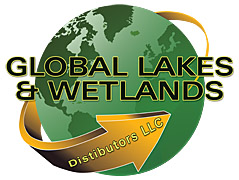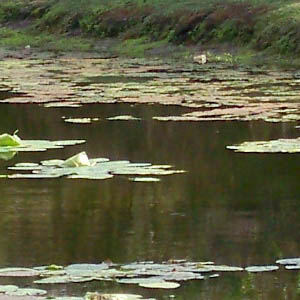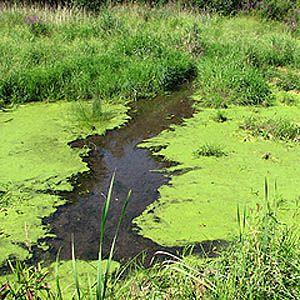|
||||||||||
Planktonic Algae - Lake & Pond Algae ControlWhile species of planktonic algae can only be indentified under a microscope, abundant growth is easy to identifiy visually. A Planktonic Algae bloom can appear as a paint-like scum on top of the water's surface. The water column turns green throughout and is often described as "pea soup." Planktonic Algae can sometimes be mistaken for other growth, such as Duckweed or Watermeal (two common plants found in ponds and still lake waters). You may easily determine if your waterbody has Duckweed or Watermeal by placing the bottom of a glass jar or drinking glass into the water. Remove the jar or glass. Duckweed will look like little flat leaves with small root hairs. Watermeal will look like small green grains. Filamentous AlgaeFilamentous algae may seem like long stringy hairs, cotton-like in appearance. Individual filaments are a series of cells joined end to end which give the thread-like appearance. Filamentous algae can form thick, greenish looking mats on the water's surface, and many times it is attached to a substrate such as rocks, logs and other plants. Some filamentous algae may be bright green and slimy, while some may look more like "horse-hair" with a course texture, like that of steel wool. Blue-Green Algae (Toxic Algae) Cyanobacteria, also known as Blue-Green Algae, can contain a harmful bacteria and be dangerous to pets and humans. The scum can often smell like sewage or manure. CharaThere is one form of algae that resembles submerged plants. The common names for these are Chara and Stonewort. Chara is very common on the bottom of lakes and ponds. Chara often looks like a matted tangle of plants, forming a carpet on the lake or pond bottom. It has a crusty, course texture and a musky odor when crushed in your hands. Chara has stem-like braches with forked leaves, and leaf-like structures that are whorled around the stem in fairly uniform intervals. Also look for little bumps or spots on the leaflets. Chara can only be treated early in its growth cycle. Its course texture later in its growth cycle is caused by the absorbtion of mineral deposits. Once chara has absorbed these materials, it begins to have an innate resistance to algaecide. Because of this, we recommend that chara be treated for early in its growth cycle before it has a chance to absorb these mineral deposits. Stonewort is similar, but has smooth branches and the stems are more translucent. The leaves also appear to be covered in a green gelatinous substance. Stonewort also lacks the musky odor found with Chara.
Check out our other products : Aquatic Blue for Lakes 128 oz. |
Algaecide/Bactericide 128 oz. |
Bacteria Bio-Maintenance, 1 lb. Puck, |
globallakesandwetlandsdisributor.com © 2015
|
 |


